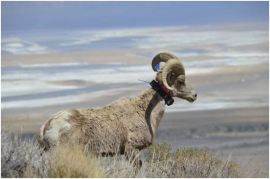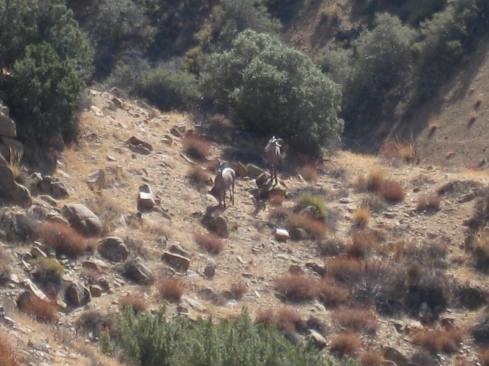Before I moved to Jacksonville last year, California’s Joshua Tree National Park was my backyard. The 1200 square mile desert park is smaller and less well-known than nearby Death Valley National Park, but that’s just fine with me. Joshua Tree is split between high-altitude Mojave Desert (my home was at 3,000 feet,) and low-basin Sonoran desert. The altitude makes for a favorable climate (for a desert) and, for me, that means inviting hiking nearly year around. I still have not learned to love the Florida outdoors as much as the high desert, where there are few insects, no humidity, and absolutely nothing obstructing a view of sometimes hundreds of miles. I’m sure that one can hike into Florida’s wilderness and enjoy just as much solitude as in the desert, but on desert mountains, a look around in all directions confirms and reinforces that you are alone. There are no people for miles, and it may be as far away from other humans as you will ever get. This feeling of isolation is one of my favorite things about exploring the desert, and I was fortunate to once have it disturbed by a couple of desert bighorn sheep.
The desert bighorn is not an endangered species, but is rare in Joshua Tree National Park. “Two hundred fifty or so desert bighorn live in Joshua Tree National Park. If you happen to see one, consider yourself really lucky!” proclaims the park’s homepage. I once read an interview with a park ranger in a local newspaper, and he lamented that after a couple of years of service, he had been unable to spot a bighorn. Of course, I discovered all of these expressions on the bighorn after my own encounter. The verifiably endangered, closely related peninsular bighorn sheep lives just across the Coachella valley, south of the park; its range extends into Mexico. I was ignorant to all the preceding information at the time of my own encounter, but even if I had been more educated at the time, I don’t think my unexpected observation of two large mammals from afar in an otherwise barren-seeming desert could have been any more exciting. Like Bergman’s encounter with the spotted owl (4), I felt I wanted more…but I still can’t say what I wanted more of.
I feel like I developed a knack for spotting things in the desert during my time living there. While hiking with my wife, I was at times able to pick out a red-tailed hawk or a desert tortoise (who does make an appearance on the endangered species list) before she saw them, and I never had a problem sighting an unusual-looking rock formation or an especially unique Joshua Tree. I think the desert has a way of putting some at ease and thus making us more receptive to its valuables. I saw the bighorn sheep while I was on a routine October hike with my wife, almost exactly three years ago. I wanted to show her a great trail that I had found in the Little San Bernardino Mountain range. It was seldom-used by park visitors and offered a stunning view of the Coachella Valley. Traveling through the desert with a companion has little effect on its powerful way of humbling and isolating the travelers. That is probably why the unexpected appearance of the sheep was so fascinating at the time. My wife and I were taking in the view of the distant San Jacinto Mountains when I noticed some movement below. I immediately identified a mammal of some sort, and initially I thought it was a mule deer. Like Columbus with the manatee (Bergman 112), I find it interesting that I first tried to assimilate the animal into something I was familiar with. Growing up in the south, I have seen plenty of deer, but never this particular animal. And like Bergman (109), I became tyrannized by my own need to see. The only thing I could do to take my eyes off the animals, as a second ewe appeared, was to grab my camera and try to get some pictures. The fact that these sheep were not male rams, with their familiar horns, added to my confusion and, as I later found out, to the uniqueness of the encounter. Upon further research, I found that it is unusual to see ewes away from the greater herd.

A desert bighorn in the Mojave, being tracked for a recent pneumonia epidemic survey.
Photo by KCDZ 107.7 FM News
My brief experience with the desert bighorns helps me relate to Bergman’s urge to see endangered animals, and to see the animals seeing us. Although very far away, I am sure that the sheep I saw were aware of our presence; sheep and goats, both domestic and wild, have sharp eyesight that protects them from predators. But unlike most of Bergman’s sightings, I wasn’t looking for anything. The animal showed itself to me, which makes the experience even more remarkable. And here, three years later, it is still showing itself to me. Seeing the bighorn sheep inspired me to learn more about them, and I am still seeing them as I sit here and write about them. I wonder, as I still look at them, if they are somehow still looking back at me.
Bergman, Charles. Wild Echoes: Encounters with the Most Endangered Animals in North America. Urbana & Chicago: University of Illinois Press, 2003. Print
Joshua Tree National Park Website. U. S. National Park Service, 2013. Web. 16 Nov. 2013.

